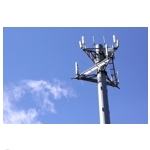 If the FCC were to create a mobility fund as it converts today’s voice-focused high-cost Universal Service program into a broadband-focused Connect America Fund program, that fund most likely would not look like “anything previously envisioned,” said FCC Commissioner Michael O’Rielly today.
If the FCC were to create a mobility fund as it converts today’s voice-focused high-cost Universal Service program into a broadband-focused Connect America Fund program, that fund most likely would not look like “anything previously envisioned,” said FCC Commissioner Michael O’Rielly today.
O’Rielly made his remarks at the Competitive Carrier Association 2015 Annual Convention in Fort Lauderdale, Florida. The remarks build on comments that O’Rielly made last month that strongly suggested there might be no mobility fund in the ongoing CAF program.
O’Rielly noted today the CAF program is not allowed to provide support for high-cost areas that are overlapped by an unsubsidized competitor. And “[w]ith nearly all of the nation covered by large wireless providers, the areas eligible for a mobility fund [if there were to be one] would be considerably fewer than just a few years back.”
While acknowledging that large carriers may not serve every location in an area, O’Rielly said “that is viewed as a factual matter to be resolved through a challenge process.”
O’Rielly also noted that he understood the argument that “without ongoing support, service in areas that are currently covered could diminish.” He added, though, that “most of the expense is in the installation of the towers and the initiation of service, rather than the ongoing maintenance of them.” Accordingly, he said, “I still expect that the commission’s focus will remain on targeting support to those areas that are truly unserved.”
Beyond the CAF Mobility Fund
Rural wireless carriers should not let a focus on a CAF mobility fund distract them from a perhaps more important issue, O’Rielly told the CCA audience.
Pointing to the rural broadband experiments, which awarded funding primarily to companies planning to deploy fiber-to-the-premises, O’Rielly cautioned that wireless carriers “could find themselves on the sidelines” in the CAF Phase II auction, which will award funding for broadband in areas of price cap territories where the incumbent carrier declined funding.
The FCC is on tap to award at least a billion dollars over six years in that auction – a considerably higher amount than was ever under consideration for a CAF mobility fund.
O’Rielly noted that he was constrained in what he could say about CAF auction plans because the commission has a pending item on that topic. Accordingly he expressed his concerns rather obliquely, noting that wireless carriers were at risk of finding themselves “on the sidelines” in the auction while wireline providers “get the first shot – and maybe even the second shot” because the wireline providers were poised to be given “an artificial leg up.”
O’Rielly said the commission was considering that “leg up” in the belief that fiber is “the only way to guarantee ‘future proof’ networks.” While acknowledging that fiber is a “great technology,” O’Rielly said “I’ve also spoken with consumers in more rural parts of America that think their local WISP provides outstanding service, and I’ve also seen reports of what 5G could deliver.”
Accordingly, O’Rielly said “[t]he Commission should not tip the scales based on outdated information and assumptions.” He also argued that favoring fiber would guarantee that the commission would “overspend in many areas while leaving others behind.”
O’Rielly urged wireless carriers to participate in the CAF reverse auction proceeding to “create a record that will enable the commission to adopt a technologically neutral auction.”


